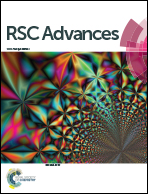The effect of charge alteration and flexibility on the function and structural stability of sweet-tasting brazzein
Abstract
To identify the structural and functional roles of Glu9 located at the first loop of sweet-tasting brazzein, two different mutants (E9K and E9G) of the minor form of brazzein were designed and constructed. Upon histidine-tag (His-tag) elimination and purification of the protein variants, their activity and structural features were evaluated. According to the resulting data of taste evaluation, it was found that the sweetness of both mutants is raised, when compared with that of the wild-type (WT) protein. Intrinsic and ANS-based fluorescence spectra revealed that the structural compactness of the protein increases in both mutants. However, far-UV CD data indicated that the secondary structural content of the protein is not changed significantly upon mutation. Furthermore, the isothermal denaturation experiments using urea as a chemical denaturant showed that the E9K mutant has more conformational stability relative to the WT protein, while the structural stability of the E9G mutant is less than that of the WT protein. We concluded that changing the net charge of brazzein toward a positive one can influence the interaction of the protein with its corresponding receptors and leads to increasing its sweetness power.


 Please wait while we load your content...
Please wait while we load your content...